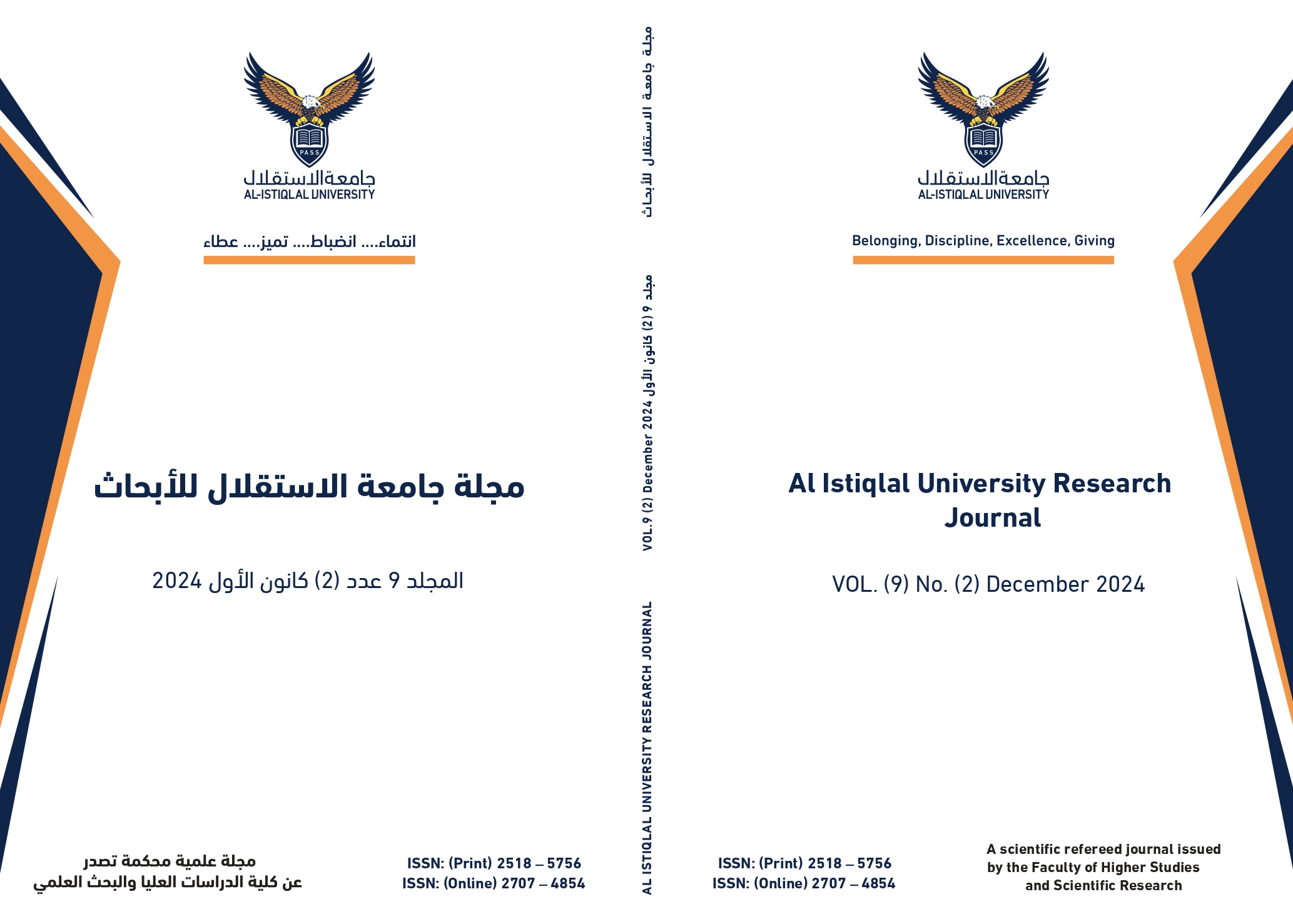Abstract
Abstract
Objectives: The current study aimed to investigate the extent to which tenth grade students in Tulkarm Governorate possess Geometry Concepts, investigate the level of students’ attitudes toward learning Geometry, and the relationship between the degree of tenth grade students’ possession of Geometry Concepts and their attitudes toward learning Geometry.
Methods: The descriptive correlational approach was used, where two scales were used to collect The data are: a test of retention of Geometry Concepts and a measure of attitudes toward Geometry. The validity and reliability of the measures used were verified. The study sample consisted of (137) male and female students.
Results: The study reached several results, the most important of which are: The degree of possession of Geometry Concepts by tenth grade students in Tulkarm Governorate was average, and their attitudes towards Geometry were positive. A direct correlation was found between the level of tenth grade students’ possession of Geometry concepts and Their attitudes towards Geometry. It also showed that there were no statistically significant differences in the degree to which tenth grade students in Tulkarm Governorate possessed Geometry concepts according to the variable gender, place of residence, and according to the previous mathematical achievement variable. There are no statistically significant differences between the attitudes of tenth grade students in Tulkarm Governorate towards Geometry according to the variable of gender, housing security, and the existence of a relationship according to the variable of previous mathematical achievement.
Conclusions: Based on the results of the study, the researcher recommended several recommendations, the most important of which are: training students to use modern technologies and computers to develop Geometry problem-solving skills.
Keywords: Geometry Concepts, Attitudes towards Geometry, Tenth grade students.

This work is licensed under a Creative Commons Attribution-ShareAlike 4.0 International License.
Copyright (c) 2025 Al Istiqlal University Research Journal




